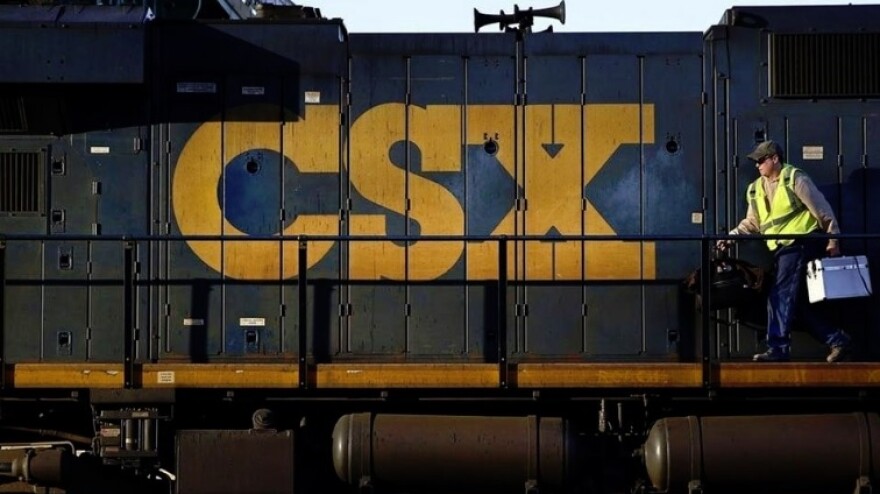The Jacksonville-based rail company CSX said new technology will help meet its goal of reducing greenhouse gas emissions intensity by 37% by the end of the decade, aftera 2019 report said CSX’s annual energy consumption has steadily been decreasing since at least 2016.
CSX announced this month that it’s partnering with Wabtec Corp. to further modernize its fleet.
“We are excited to partner with Wabtec on advanced solutions that will transform our fleet while improving our carbon footprint,” said Jamie Boychuk, CSX executive vice-president of operations.
CSX says it will be the first rail company to use Wabtec’s Trip Optimizer Zero-to-Zero system, a technology that automatically starts and stops trains.
CSX also plans to revitalize its fleet with the first order of Wabtec’s switcher modernization program, which is expected to take 40- to 50-year-old locomotives and improve their fuel efficiency by 20% and reduce their emissions by as much as 90%. According to CSX, each upgraded locomotive will help get rid of 90 tons of carbon and 7 tons of nitrogen oxide emissions every year.
Additionally, CSX plans to upgrade locomotives throughout its fleet with Wabtec’s new FDL Advantage engine, which reduces fuel consumption by as much as 5%. CSX says these upgrades could reduce the carbon footprint of each locomotive by as much as 250 tons every year.
“These solutions will enable CSX to maximize the full potential of its fleet both from an environmental and financial perspective,” said Wabtec spokeswoman Gina Trombley.
Arizona State University Professor Mikhail Chester, who has studied greenhouse gas emission reductions of rail systems in California, applauds CSX’s climate goal as pretty aggressive given the short time frame. But he said reducing emissions intensity, like CSX aims to do, is not the same thing as cutting overall emissions, which would have more of an impact.
For rail companies, emissions intensity means the amount of greenhouse gases that are emitted to move a ton of goods one mile. But it’s not the whole picture, he said.
“If they’re [CSX] reducing their greenhouse gas intensity, what’s happening to their operational profile? Is it increasing slightly so that they’re still reducing their overall footprint? Or is it increasing a lot so that their footprint is going up?” Chester said. “And are they recognizing, even with the intensity improvements, that their footprint might go up?”
For example, if CSX’s fleet were emitting 1 million tons of carbon dioxide every year and the company was able to successfully reduce the emissions intensity of all of its locomotives by 20%, it would be reducing its overall carbon footprint by 200,000 tons per year. However, if CSX were to then double the size of its fleet, the company’s carbon footprint would actually increase to 1.6 million tons annually.
Chester said, on top of its short-term goals, CSX and other railroads will have to keep cutting emissions drastically even after 2030 if they want to do what scientists say is necessary to avoid the worst impacts of climate change. They could do that by investing in solar technology, using electric locomotives and planting trees, among other things, he said.
Brendan Rivers can be reached at brivers@wjct.org, 904-358-6396 or on Twitter at @BrendanRivers.





